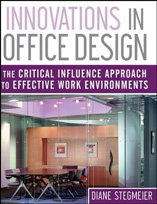Critical Influence™: Corporate Culture
What is corporate culture?
 Organizational culture is defined by how employees, management, and the external environment interact with one another, along with how a set of values are embodied in business operations. But even with these indicators, it is often difficult to explicitly define corporate culture accurately.
Organizational culture is defined by how employees, management, and the external environment interact with one another, along with how a set of values are embodied in business operations. But even with these indicators, it is often difficult to explicitly define corporate culture accurately.
In most cases, external individuals such as customers, vendors, or applicants, along with newly-hired employees are the ones who can precisely describe the culture of a firm through first impressions.
How so? Let’s apply some context to this concept.

As part of the 15 Critical Influences™, this page on Corporate Culture is integrated with actual content from the book Innovations in Office Design: The Critical Influence Approach to Effective Work Environments™ by SCG Founder Diane Stegmeier.
How first impressions can accurately describe an organization’s culture
When customers call with a simple question and are passed on from one department to another just to get an answer, they may accurately sense that this firm has a complex structure, is difficult to work with, or have employees who lack proper training. A negative impression born out of a single encounter with a disorganized customer service department can turn out to be an accurate assessment of the company’s culture.
Certainly, this is not the type of perception that organizations want to conjure up in its stakeholders’ minds, which is why a goal of many new workplace strategies is to reshape the organization’s culture to one that is more collaborative, transparent, and innovative.
However, when there is a disconnect between what an organization claims to be and what it is perceived to be, a culture of mistrust can contribute to low employee morale. Not only that, its effect can extend out to customers engaging with the business.
It takes keen observation to describe an organizational culture, especially for those internal to the company. It is even harder for those at the top of the organization to gauge how desirable the workplace culture is and how close reality is to the cultural pillars leadership may profess.
It might be easy for them to realize the impact organizational culture can have on employee behavior and, subsequently, on the productivity of the firm. But when they struggle to outrightly identify what the culture is, most likely it is time that business leaders take a different approach in evaluating it.
Such was the case with one client that Stegmeier Consulting Group worked with. This following example demonstrates how an organizational culture can be described through a metaphorical exercise.
Metaphorical representation of organizational culture
The client is a global Fortune 500 company considered a leader in its industry. It excels in many facets of its operations and had an excellent reputation for being one of the best places to work.
The business leaders wanted to identify the positive aspects of their corporate culture to leverage those factors, as well as the negative elements to be able to address them while the company was undergoing major changes.
SCG facilitated an organizational exercise where the leadership team was asked to compare their company to an unrelated object, in this case, a finely tuned car. To give you a clear picture of how they translated their culture into a metaphor of car parts, here is an excerpt from the interactive session:
The company’s strong focus on team recognition is the sun visor of the car. To prevent a single individual from basking in the bright light, the culture emphasizes team spirit and encourages the individual to recognize his or her peers for their contribution to that individual’s success.
Many other qualities of the company were likened to specific car parts that shed light on the positive elements of its culture. As the activity progressed, participants were also able to identify barriers that inhibited harmony.
The results of such an activity reveal how well a culture can enable the achievement of organizational goals. Each part of the car mirrors the key cultural elements of any client organization—the relationship between a company’s numerous interrelated parts, its interactions with employees, and its external environment.
The relationship between corporate culture and workplace design
 Designing an innovative workplace goes well beyond simply incorporating a variety of collaboration spaces, offering sit-stand desks, and making spaces feel vibrant with a bright color palette.
Designing an innovative workplace goes well beyond simply incorporating a variety of collaboration spaces, offering sit-stand desks, and making spaces feel vibrant with a bright color palette.
Any office space can boast of state-of-the-art facilities and modern work tools to encourage collaboration. But without proper consideration of cultural elements present in an organization, a well-designed workplace may erect unwanted barriers.
This is why workplace design professionals are expected to be well-versed in human resources issues such as generational issues, attraction and retention challenges, and flexible work schedules.
Learning about the various elements of the Critical Influence System™ can further enhance understanding of these challenges and aid in the development of successful workplace strategies.
Moreover, the responsibility of driving successful change through a functional physical workplace does not solely depend on the architects or interior designers.
Human resources professionals are also encouraged to become educated in the fundamental principles of the physical workplace. Awareness of these principles can help them drive change and modify employee behavior in order to successfully foster a creative and innovative culture in what may be a dramatically different work environment.
Incongruence between corporate culture and the physical workspace
Business leaders may feel that everything is under control and there is nothing wrong with the organization’s culture. However, stakeholders may perceive it differently.
A mismatch occurs when a company describes their culture in a way that is different than how it’s perceived by both the internal and external individuals.
A perfect illustration of this concept involves the office environment of a distributor of healthcare instrumentation and consumable products. It was self-promoted as “world class,” touting its environment-friendly packaging and its on-time delivery to hospitals throughout the United States.
This enterprise invited prospective customers to visit their pristine distribution center to demonstrate right before their eyes how every product is handled with superior care. As a potential customer, you would think that this firm stays true to their words. What you see is what you get.
One instance, however, revealed that the front offices’ physical state was the complete opposite of the distribution center adjacent to it. It was witnessed by a potential customer who accidentally wandered in the premises. Furniture was mismatched and in ill repair, and the office equipment looked like it had not been updated since the 1980s.
This definitely did not reflect their claim of being a first-rate firm. What was even more damaging than the impression it created on the customer is its effect on the morale of the front office employees.
It is evident that in this case, the forsaken physical workplace created a backward culture that is incongruent with what is desired.
Another meaningful lesson that can be derived from this scenario is that the culture experienced in one side of the company should be the same truth lived in the remaining parts to create a truly innovative corporate culture.
Is your corporate culture what you claim it to be on your website? Do your workspaces reflect that?
When positive cultural elements meet innovative workplace design
As already covered, workplace strategists and design professionals are typically faced with the task of identifying organizational cultural elements that may put a wrinkle in designing and implementing a workplace strategy successfully.
Designing a physical workplace that “looks” innovative does not guarantee alignment of this Critical Influence™ in the context of how the organization’s employees work. A number of factors need to be examined to ensure success, including employee and leader behaviors, congruence of the Critical Influences™, and executive leadership’s commitment to removing barriers to the successful implementation of the new workplace strategy.
Identifying the positive cultural elements of an organization will increase the assurance of designing a workplace that fosters a desirable and innovative culture.
This is what Brian Hall, Thomson Legal and Regulatory Group’s CEO, had in mind when a workplace transformation was initiated in their office in St. Paul, Minnesota. He selected specific individuals to serve as members of a cross-functional workplace project team to ensure all key issues would be addressed from different perspectives.
To highlight the firm’s collaborative culture and speak to job candidates of its energetic, fast-paced environment, Thomson’s six floors were transformed from a “vast sea of gray-color cubes” to a diverse workplace community. It included open team areas that were balanced with workstations to offer more privacy.
Senior leaders were removed from corner offices on the top floor and strategically positioned in glass offices near the circulation paths, for increased interface with all levels of employees.
Spontaneous knowledge sharing was encouraged by the placement of comfortable venues throughout the space, including a cafe in the community’s “downtown,” where one can select from private nooks or the open area to conduct activities.
As shown in this case, the company’s positive culture of collaboration was leveraged and translated into a workplace that enhances the creativity and teamwork of employees.
Consulting services for successful cultural alignment
Your organization has a unique culture. Make sure that your culture is looked at holistically in advance of a workplace transformation. Stegmeier Consulting Group’s expertise includes efficient analysis of your organization’s distinctive system to help you devise a fitting workplace strategy.
If this sounds like the type of assistance that you are looking for, take the first step towards cultural alignment with your new workplace strategy by filling out the form below.



